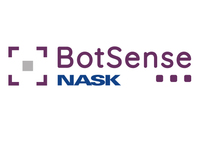Pacut, A; Czajka, A
Various experiments show an alarming lack of anti-spoofing mechanisms in devices already protecting many sensitive areas all over the world, proving that aliveness detection methods must be quickly included in commercial equipment. To introduce and systemize the topic, the paper begins with a survey of possible types of eye forgery, together with possible countermeasures. The authors introduce three solutions of eye aliveness detection, based on analyses of image frequency spectrum, controlled light reflection from the cornea, and pupil dynamics. A body of various fake (printed) eye images was used to test the developed methodologies, including different printers and printout carriers. The proposed methodology was embedded into the NASK iris recognition system and showed its large potential. For a local database of pairs of alive and printed eyes, all methods proposed in the paper revealed zero false acceptance rate of fakes FAR-F. The false rejection rate of genuines FRR-G reached 2.8% for the first proposed solution, and showed null value for the next two proposed methods. This very favorable compares to the commercial equipment tested: two popular iris cameras accepted 73% and 15% of the prepared fake irises












